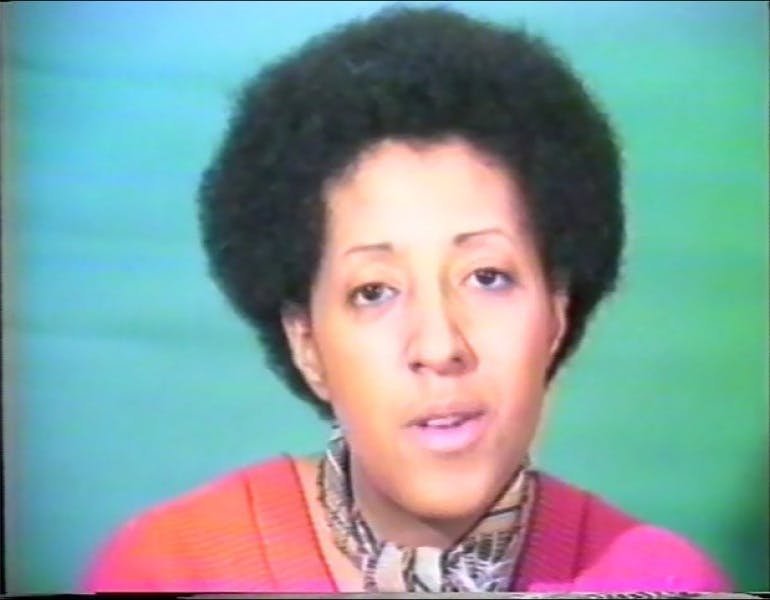- Special Exhibition

Free, White, and 21, 1980. Howardena Pindell (American, b. 1943). Color video, sound; 12:15 min. Courtesy of the artist and Garth Greenan Gallery, New York
Pioneers: Part Two
Featured Art
About The Exhibition
Video art emerged in the 1960s with the advent of video recording devices and steadily gained traction alongside the increased presence of television in daily life. The latter forever changed how images were distributed, consumed, and eventually reconstituted in and beyond art. Featuring five videos, Pioneers: Part Two is the second presentation in the Video Project Room that brings together landmark works by artists who helped define the medium of video art in the United States.
Bouncing in the Corner, No. 1, 1968
Black-and-white video, sound; 60 min.
Bruce Nauman (American, b. 1941)
To make Bouncing in the Corner, No. 1, Bruce Nauman turned the camera on its side, rendering its vertical subject matter—the artist’s body with his head cropped out—horizontal. The camera captures Nauman standing in the corner of his studio, repeatedly falling backward into the wall and pushing himself out. Because of the camera’s vantage point, he appears to be levitating. Here, as elsewhere in Nauman’s work, he plays on the fantasy that artists have superhuman powers.
Courtesy of the artist and Electronic Arts Intermix (EAI), New York
Centers, 1971
Black-and-white video, sound; 22:28 min.
Vito Acconci (American, 1940–2017)
In Centers, a close-up image shows Vito Acconci pointing at his own image on the video monitor, trying to target the precise center of the screen. In doing so, he also points at the viewer, unsettling the passive spectatorship that is typical of TV watching.
© Vito Acconci Estate and courtesy of Electronic Arts Intermix (EAI), New York
Semiotics of the Kitchen, 1975
Black-and-white video, sound; 6:33 min.
Martha Rosler (American, b. 1943)
References to television are central to Martha Rosler’s Semiotics of the Kitchen. A parody of popular cooking programs, this foundational feminist artwork shows a woman in a kitchen, surrounded by an array of domestic tools. As she demonstrates their potential uses, moving through them from A to Z, her gestures are tinged with violence and frustration. This refers to her sense of social confinement, which is underscored by the video’s tight frame.
Courtesy of the artist and Electronic Arts Intermix (EAI), New York
The Nurse and the Hijackers, 1977
Color video, sound; 75 min.
Eleanor Antin (American, b. 1935)
In Eleanor Antin’s The Nurse and the Hijackers, a cast of paper dolls, animated by the artist, enacts a feature-length narrative about a failed airplane hijacking. The work is marked by Antin’s characteristic blend of history, narrative, politics, and humor.
Courtesy of the artist and Electronic Arts Intermix (EAI), New York
Free, White, and 21, 1980
Color video, sound; 12:15 min.
Howardena Pindell (American, b. 1943)
In Free, White, and 21, Howardena Pindell recounts her experiences of racism and sexism as an African American woman, while also playing the role of, and making herself up as, a white woman who discredits Pindell’s perceptions. The video’s close-up view brings its viewer into intimate contact with the artist’s critique of institutionalized racism.
Courtesy of the artist and Garth Greenan Gallery, New York